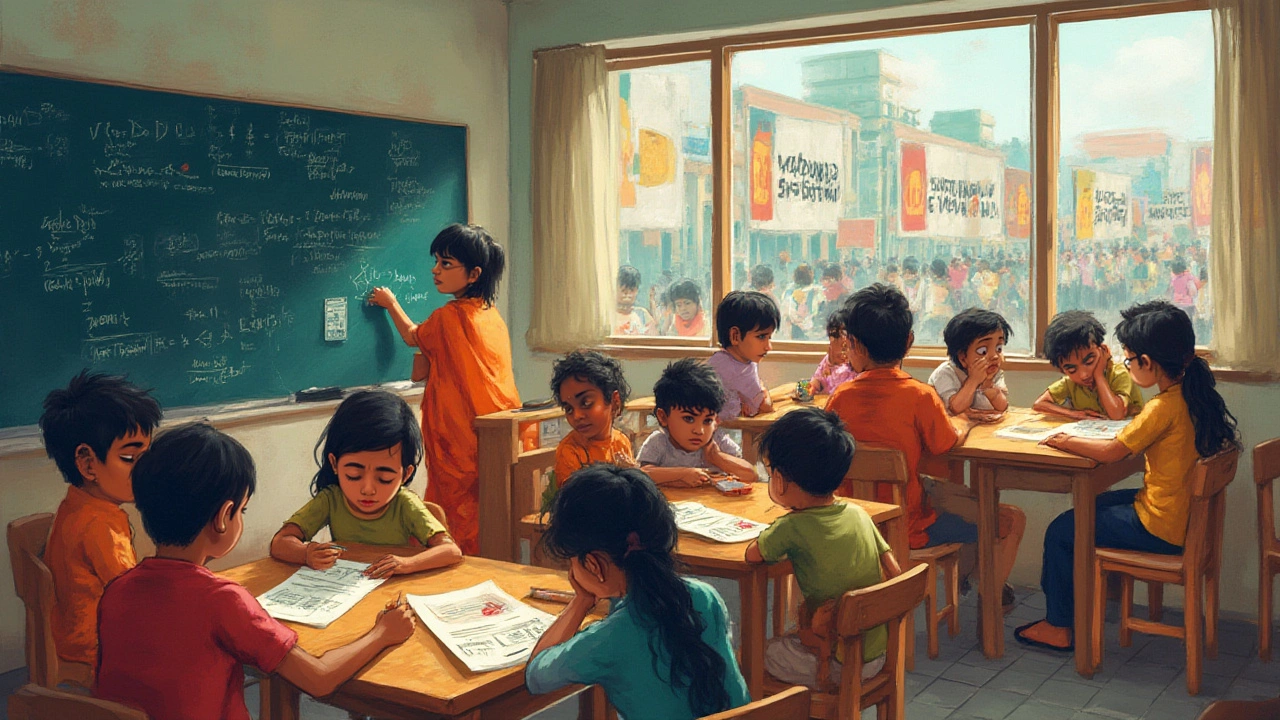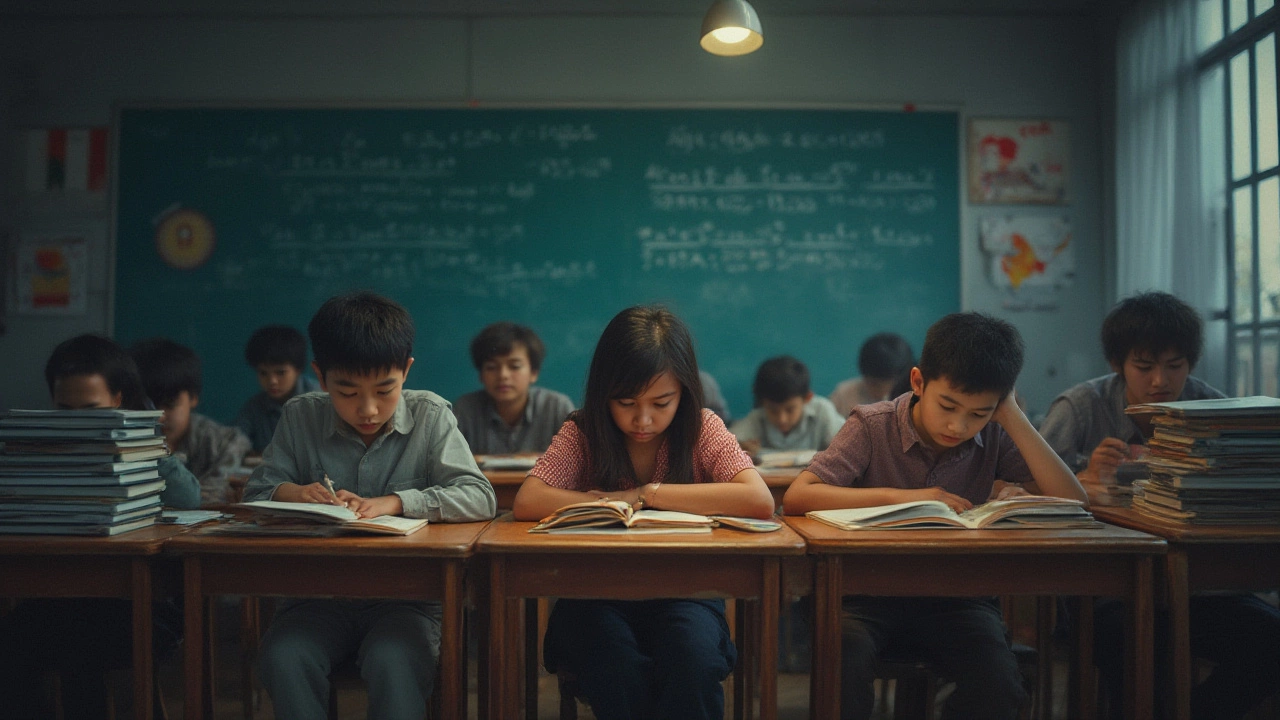Imagine a place where school isn't just a part of life—it's life. Kids eating dinner over math books. Students dozing on buses with flashcards on their laps. Not just one or two nights during finals week—but for years. That’s not an exaggeration for millions of students worldwide. The question of which country is the hardest to study in isn't just a bar trivia fact; it’s a look at cultures where learning feels more like an extreme sport than a classroom experience. Let’s peel back what makes certain countries notorious for their academic pressure, and how you’d survive—even thrive—if you found yourself in one.
The Meaning of “Hardest” When It Comes to Study
If you ask ten people what the hardest country to study in is, you're going to get ten different answers—and some emotional horror stories. But what actually makes a country hard for students? It’s not just about tricky math or memorizing endless history dates. It’s the cocktail of sky-high expectations, relentless workload, fierce competition for top spots, and—oof—the pressure from family and society to not just pass, but crush every test.
For a clearer comparison, experts usually look at things like:
- Number of hours spent studying both in class and at home
- Average homework burden per week
- Frequency and difficulty of standardized exams
- Student stress levels, mental health data
- University or career outcome pressure after high school
- Societal expectations for academic performance
Let's get real—no place is a cakewalk, but some have reputations that send shivers down even diligent students' spines. Popular wisdom and a raft of studies consistently call out a handful of countries as the planet’s most academically punishing. Take Japan, South Korea, China, Singapore, and sometimes India and Russia—they’re not just scoring top marks in math olympiads, but also topping the charts for student anxiety and burnout.
A quick glance at the stats proves this isn't hype. South Korean teens, for instance, often tally over 14 hours per day on schoolwork, including cram sessions at hagwons (private academies), according to the Korean Ministry of Education. China’s "Gaokao" university entrance exam is so famous for its brutality that parents set up camp outside testing centers, and kids can spend years in preparation. Students in some Indian states sit for up to 6,000 exams from age 6 to 18. That’s not a typo.
You might wonder: is all this pressure worth it? That’s a hotly debated question, and the price isn’t always obvious until students start to crack—literally. So beyond the numbers, it’s worth understanding what daily life is really like in these classrooms and homes.

The Toughest Education Systems: A Country-by-Country Deep-Dive
Now, let’s pull out some passports and walk through what everyday study grind looks like in the world’s toughest countries. You might recognize pieces—long hours, parents with anxiety—but each country adds its own twist on academic pressure.
South Korea wears the crown for the most intense academic hustle. Kids are in school from 8 a.m. to 4 p.m., but their day is far from over. Most dash straight to hagwons; think of them as supercharged tutoring academies, often going until midnight. Korean families don’t just value education—they double down on it. Exams come thick and fast, and the Suneung (university entrance test) is infamous for shutting down the entire country—flights even pause takeoff so students can concentrate during the listening section. According to OECD stats, South Korean teens report some of the world’s highest rates of academic stress and sleep deprivation.
Next door in Japan, the marathon is just as grueling. The school week isn’t even limited to weekdays—Saturday classes are common, and clubs or "juku" (cram schools) take over evenings and weekends. Getting into top high schools and universities is a full-contact sport, sometimes starting before age ten. Entrance exams here aren’t just memory games—they demand deep critical thinking with questions designed to stump even adults. Japanese discipline and respect for rules adds another layer; students clean classrooms themselves, follow strict uniforms, and can get penalized for minor rule breaches. Despite all this, Japan’s international rankings in math and reading are consistently stellar.
China turns the dial to 11 with its massive "Gaokao" system. This test, considered the world’s hardest, all but decides a teenager’s future. Entire families move cities to be closer to better schools. In 2024, over 13 million students took the Gaokao—just 2% get offers from China’s elite universities. School days can run from 7 a.m. to 6 p.m., followed by hours of homework and test prep. Parents can be relentless; some rent tiny apartments (“陪读房”) near schools so their kids can focus, or pay for evening tutors on every subject. Academic cheating has even inspired elaborate security—think face scans and fingerprint readers. Still, the stakes are so high that stress-induced hospitalizations before Gaokao season aren’t rare.
Singapore, although much smaller, crams pressure into every square mile. The competition to get into the best primary, secondary, and tertiary schools is fierce. Kids take national exams at age 12 (the PSLE) and split into tracks that shape their futures early. Singaporean students consistently ace global standardized tests, but many report high levels of anxiety. The government recognizes this and has started easing homework and grading policies, but the mindset persists: ‘Failure is not an option.’
India presents its own unique set of challenges. There’s the chaos of a vast population and fierce rivalries for a handful of prized university seats (IITs, AIIMS, and such). Board exams and endless entrance tests rule teenage years. Coaching centers have boomed in cities; some even run overnight classes before big tests. Kids often juggle multiple schooling systems and languages, thanks to India’s diverse schooling (CBSE, ICSE, state boards). There’s immense family pressure to go into engineering or medicine, leading to legendary all-night study marathons. Board results get splashed across social media and newspapers, fueling anxiety and—sadly—occasional reports of exhaustion and breakdowns.
Even Russia deserves a shout. Exams are difficult and heavily emphasize memorization. The university selection process—paired with the reality that top choices are limited—means a ton of smart students get sorted out long before they reach their dream careers. The grind continues into university with little flexibility on course loads.
What about Western countries, like the US or UK? The challenges are real, but the culture shifts towards a (slightly) healthier balance. Stress exists—especially in elite private schools or among those aiming for Ivy League—but the general grind rarely matches East Asian levels. Plus, extra-curriculars and sports are valued more, giving kids a break from constant academics.
Take a look at a quick breakdown of just how intense studying is in some top countries:
| Country | Avg Study Hours/Day (High School) | Key Exam(s) | Reported Student Stress (2023) |
|---|---|---|---|
| South Korea | 12-14 | Suneung | 85% (high or severe) |
| Japan | 9-11 | University Entrance | 78% |
| China | 10-13 | Gaokao | 81% |
| Singapore | 8-10 | PSLE, A Levels | 77% |
| India | 8-9 (plus coaching) | Board Exams, IIT-JEE | 73% |
| USA | 6-7 | SAT, ACT | 55% |
Those numbers don’t lie—where you grow up matters a lot in terms of daily study struggle.

Why Does It Get So Tough—and Can You Handle It?
Alright, so why do these countries make life so tough for teens? Simple answer: The payoff for academic success is massive. In places like South Korea or China, getting into the right university is a ticket out of poverty, a source of pride, and often a guarantee of a better career. Since top schools only have so many slots, competition gets out of hand. Social mobility, personal ambition, and sometimes government policies fuel the grind.
But it’s not only external pressure. Walk into a South Korean high school and you’ll see kids competing quietly with their own friends. Many parents admit funneling more than a third of their income into private tutoring. And don’t forget "face"—social reputation matters, so failure is intensely personal.
The impact? Kids sleep less (often under 6 hours a night), report high stress, and mental health concerns are serious. Yet, strangely, students also support rigorous systems because they believe hard work will eventually pay off. For outsiders, it’s easy to see cruelty. But for many locals, surviving the grind is a rite of passage. The friends you make in these academic ‘trenches’ often turn into lifelong allies.
If you’re planning to study abroad or just want to hack your way through any tough education system, here are tips from students who’ve survived the world’s hardest classrooms:
- Prioritize Sleep (seriously): No grade is worth long-term burnout. Even top Gaokao scorers have spoken about needing a regular sleep schedule to keep grades (and sanity) up.
- Learn Efficient Note-Taking: Systems like the Cornell method help you digest lectures in less time and nail exam reviews.
- Get Smart About Time Management: Use digital planners or physical notebooks. Divide big topics into smaller, daily targets. Don’t try to marathon everything in one go.
- Find Peer Study Groups: Working together isn’t cheating. Group review can fill gaps in understanding and keep you motivated—especially when things get rough.
- Ask for Help: Modern schools increasingly offer counseling. Don’t wait until things hit crisis mode; talk to someone if it’s getting out of hand.
- Set Realistic Goals: Not everyone needs to be number one. Aim for strong progress, not perfection, and celebrate even small victories.
One more thing: If you ever see peers struggling, step in or report it. In high-pressure systems, student voices can change rigid norms. In recent years, governments in places like South Korea and Singapore have pushed to lower academic stress after tragic incidents made headlines. Study hard, but take care of each other—I’ve seen how a small act of support can mean everything on a tough day.
So, what’s the hardest country to study in? The honest answer might be: it depends on how you define “hard.” But if you’re talking sheer intensity, high-stakes exams, and nights fueled by coffee and hope, you’re almost guaranteed to find that in East Asia. The challenge shapes students for life—but the cost can be high. Know what you’re walking into, respect the grind, and keep your head above water. If you can make it there, you can make it anywhere.

